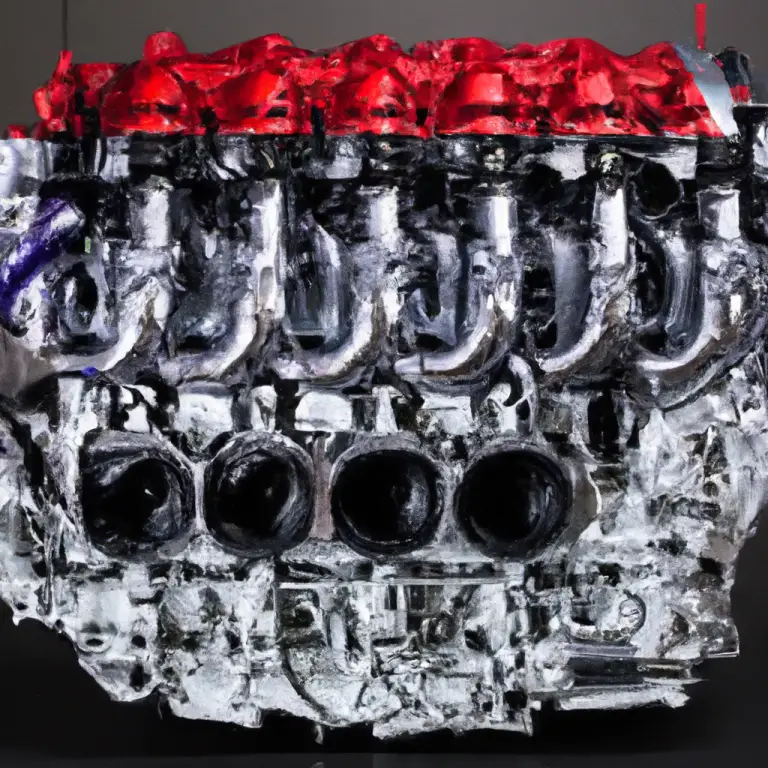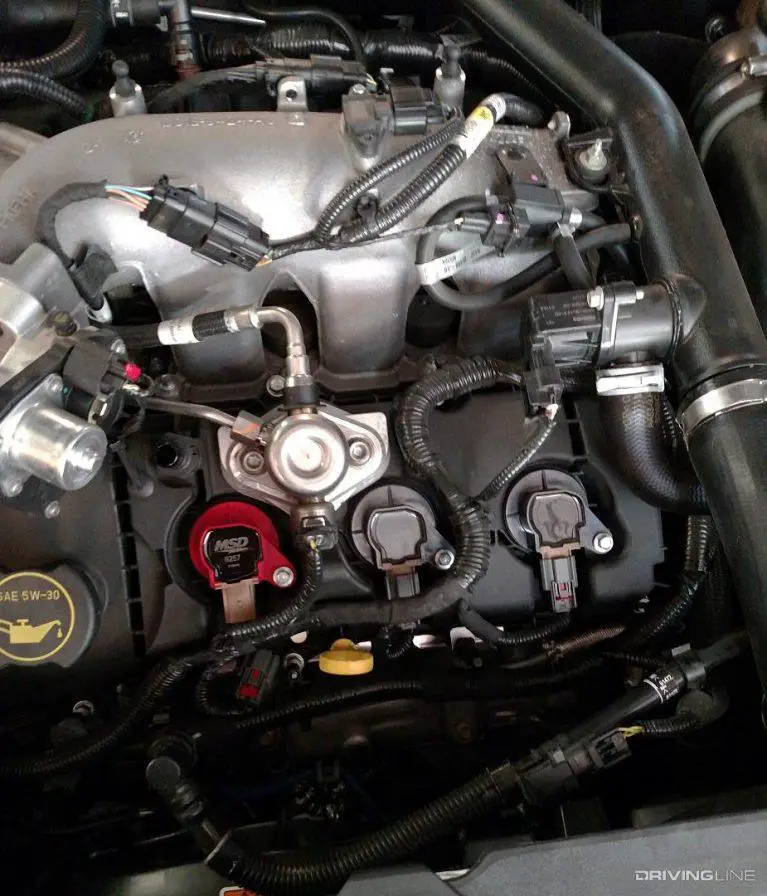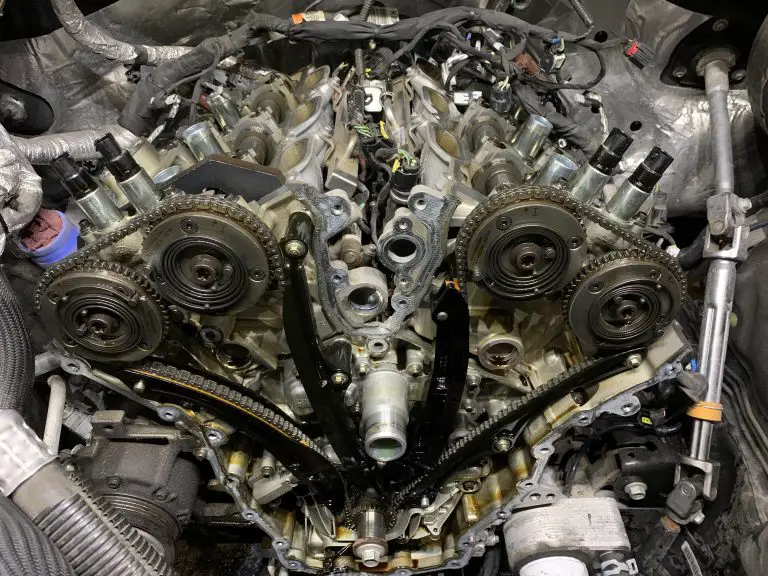When Does Ecoboost Kick In
Last Updated on by David Jon
In this meticulously crafted piece, I aim to expound on the topic “When Does Ecoboost Kick In,” providing much-needed insight into the workings and timings of the Ford’s Ecoboost engine technology. In a market where fuel efficiency and power go hand in hand, understanding this system can provide significant value to both casual and enthusiastic vehicle owners. This article is geared towards demystifying the intricate workings of Ecoboost, examining its benefits, technical aspects, and importantly, pinpointing the precise moment it kicks into action, transforming your driving experience. This elaborate dissection of the subject will equip you with pertinent knowledge, proving invaluable, particularly when investing in a Ford vehicle or resolving linked performance issues.
Understanding the Concept of EcoBoost
Definition of EcoBoost
EcoBoost represents an innovative engine technology developed by Ford. It is designed to deliver robust horsepower and torque while optimizing fuel efficiency. Key characteristics of EcoBoost engines involve the amalgamation of direct fuel injection, turbocharging, and twin independent variable camshaft timing.
How EcoBoost Works
At its core, an EcoBoost engine operates much like a conventional internal combustion unit, albeit with a few crafty innovations to enhance its efficiency and power. The sine qua non of EcoBoost is its turbocharging system, which helps the engine draw in more air, allowing it to burn fuel more efficiently and deliver more power.
Benefits of EcoBoost
EcoBoost engines offer several advantages, including improved fuel efficiency, reduced greenhouse emissions, and a superior power-to-weight ratio. By compressing the air ingested into the engine, EcoBoost increases the amount of oxygen available for combustion, leading to a significant increase in power.
Innovations in EcoBoost Technology
A significant innovation in EcoBoost technology is the introduction of the twin-scroll turbocharger. It allows the engine to deliver power more efficiently by improving turbocharger “lag.” This innovation results in quicker pick-up from the engine while maintaining the fuel efficiency that EcoBoost is known for.
Identifying the Key Signs of EcoBoost Activation
Engine Performance Indicators
Determining when EcoBoost kicks in can be observed by paying attention to your vehicle’s performance. You might notice a sudden increase in acceleration power, primarily translating to the additional horsepower provided by the EcoBoost technology.
Changes in Fuel Consumption
Another sign of EcoBoost activation is decreased fuel consumption. The EcoBoost function is designed to deliver power and efficiency by operating the engine at its most effective range more often, therefore reducing fuel wastage.
Vibrations and Sound Signals
Some drivers report a distinctive sound or a slight vibration when the turbocharger, part of the EcoBoost system, kicks in. These sensations are indications that the EcoBoost is in operation, increasing your vehicle’s horsepower.

The EcoBoost Engine Line-up
Types of EcoBoost Engines
There is a wide range of EcoBoost engines provided by Ford, including 1.0L three-cylinder, 1.5L, 1.6L, 2.0L, 2.3L four-cylinder and 2.7L, 3.5L V6 engines. Each engine is designed to offer a different balance of power and efficiency, meeting diverse driver needs.
Performance Ratings of Various EcoBoost Engines
The performance of EcoBoost engines varies. For instance, the 1.0L EcoBoost engine offers up to 123 horsepower and 125 lb-ft of torque. Still, the 3.5L V6 EcoBoost propels a whopping 375 horsepower and 470 lb-ft of torque, clearly exhibiting the range of performance available from EcoBoost technology.
Vehicles Featuring EcoBoost Engines
A wide array of Ford vehicles is equipped with EcoBoost engines. These encompass compact cars like the Ford Fiesta and Ford Focus, midsize and full-size sedans like the Fusion and Taurus, and SUVs like the Escape, Edge, and Explorer. EcoBoost is also deployed in high-performance vehicles like the Ford Mustang and F-150.
The Role of Turbocharging in EcoBoost
Understanding Turbocharging
Turbocharging is a procedure in which an air pump, or turbocharger, injects more air into the combustion chamber, offering more oxygen for fuel to burn. This results in additional power from each detonation within the engine’s cylinders.
How Turbocharging Enhances Engine Performance
By increasing the amount of air available for fuel combustion, turbocharging significantly boosts an engine’s horsepower output without increasing its size. This makes turbocharging a key component in EcoBoost engines, as it performs a major role in the engines’ power and performance capabilities.
Activation of Turbocharge in EcoBoost
In an EcoBoost engine, the turbocharger kicks in when the driver demands more power. The increased demand for power sends more exhaust gases through the turbocharger, causing it to spin faster and compress more intake air. This compressed air, in turn, drives the engine to deliver a boost in power.

Tackling Common Misconceptions about EcoBoost
Myth 1: EcoBoost Kicks in At Particular Speed
The popular misconception is that EcoBoost only kicks in at a certain speed or rpm level. In reality, EcoBoost operates throughout the vehicle’s driving range as it is an integral part of the engine’s operating principles, not a bolt-on feature.
Myth 2: EcoBoost Leads to More Fuel Consumption
There is also a false impression that the enhanced performance from an EcoBoost engine leads to more fuel consumption. In actuality, EcoBoost technology was designed to offer increased fuel economy, as its smaller size and turbocharger system enable it to operate more efficiently than larger engines with similar power.
Myth 3: EcoBoost Engines Lead to More Maintenance
Another myth about EcoBoost engines is that they require more maintenance. However, there is no significant disparity between the upkeep requirements for an EcoBoost engine compared to any other typical internal combustion engine. Normal proper maintenance applies.
Comparison Between Regular Engines and EcoBoost Engines
Performance Comparison
When comparing EcoBoost engines to regular engines, the most noteworthy difference comes with performance. EcoBoost engines are designed to provide substantial horsepower and torque gains over conventional engines, thanks to their innovative turbocharging and direct fuel injection systems.
Fuel Efficiency Comparison
In terms of fuel efficiency, EcoBoost engines usually outperform conventional engines. This is due to their smaller size and efficient operation, which help to reduce fuel consumption. It is important, though, to note that driving habits play a significant role in achieving the fuel efficiency benefits.
Maintenance & Longevity Comparison
In terms of maintenance and longevity, EcoBoost engines are no different than their conventional counterparts. Like any other engine, their lifespan depends largely on regular maintenance and proper usage.
EcoBoost Performance in Real World Scenarios
Everyday City Driving
In city-driving scenarios, EcoBoost engines offer a balance of power and fuel efficiency, thanks to their turbocharging system. They deliver agile, responsive performance when navigating through city traffic, and efficient operation when cruising at a steady speed.
Highway Cruising
On the highway, EcoBoost engines provide an excellent combination of power and fuel consumption. The active turbocharging and direct injection system keep up with sustained speeds and quickly respond to acceleration commands when overtaking or merging with traffic.
Off-Roading Adventures
When it comes to off-roading adventures, vehicles equipped with larger EcoBoost engines, like the 2.7L or 3.5L V6, offer ample power and torque to tackle various terrains. While the fuel efficiency may take a slight hit due to demanding conditions, their overall performance remains impressive.
Racing Conditions
In racing scenarios, EcoBoost engines shine as the turbocharging system enables them to provide powerful acceleration, excellent speed, and responsive control. In these conditions, the vehicle operates mostly in the high rpm range, where the turbocharger works to its full potential.
How to Enhance the Performance of Your EcoBoost Engine
Best Practices for Maintenance
To maintain and enhance the performance of your EcoBoost engine, keeping it serviced as per the manufacturer’s recommendations is crucial. Regular oil changes, tire rotations, and timely inspections of the cooling and exhaust systems are some best practices you can follow.
Using Appropriate Fuel
Using the appropriate grade of fuel is also essential for optimal EcoBoost performance. High-octane fuel is recommended for best results, as it allows the engine to run more efficiently and get the most out of its turbocharging system.
Avoiding Common Mistakes
Avoid common mistakes such as ignoring warning lights on your vehicle’s dashboard, neglecting oil changes, and using low-grade fuel. These may lead to decreased performance or damage to the EcoBoost system.
Exploring EcoBoost in Electric and Hybrid Vehicles
Adaptation of EcoBoost in Electric Vehicles
In the realm of electric and hybrid vehicles, EcoBoost technology helps to complement the electric powertrain’s function. As these vehicles rely primarily on electric power, the EcoBoost engine serves as a generator to recharge the battery pack, optimizing power and efficiency.
Performance of EcoBoost in Hybrid Cars
In hybrid vehicles, EcoBoost engines work in harmony with electric motors to provide powerful, efficient performance. When running on petrol, the turbocharger of the EcoBoost engine kicks in to deliver an extra boost of power. When running on electric power, the engine is not actively used, reducing fuel consumption and emissions.
Future of EcoBoost in Electrification Era
With the move towards more electric and hybrid vehicles, the future of EcoBoost technology remains secure. It serves as a bridge between traditional internal combustion engines and full electrification and will continue to play a vital role in vehicles with hybrid powertrains.
Expert Opinions and Reviews on EcoBoost Engines
Professional Mechanic Views
Professional mechanics often appreciate EcoBoost engines for their balance of power and fuel efficiency. They also appreciate the reliability and durability that come with regular and proper maintenance, considering EcoBoost engines as a positive step towards more advanced, efficient combustion engines.
Consumer Reviews and Experiences
Consumer reviews for EcoBoost engines typically laud the blend of power and fuel efficiency that the technology offers. Users also appreciate their excellent performance in real-world scenarios, including city, highway, off-road driving, and even racing conditions.
Automotive Industry Expert Analysis on EcoBoost
In the automotive industry, experts commend the EcoBoost technology for pushing the boundaries of what’s possible in combustion engines. It is seen as an innovation that tackles the crucial challenge of balancing power with efficiency, redefining expectations for performance and environmental sustainability.
In conclusion, understanding when the EcoBoost kicks in is a crucial aspect of comprehending the function of these advanced engines. EcoBoost’s seamless integration into the core operation of the engine and its contribution to power, fuel efficiency, and performance showcase it as a significant advancement in combustion engine technology. For more detailed insights into EcoBoost engines and their maintenance, stay tuned for upcoming information.







